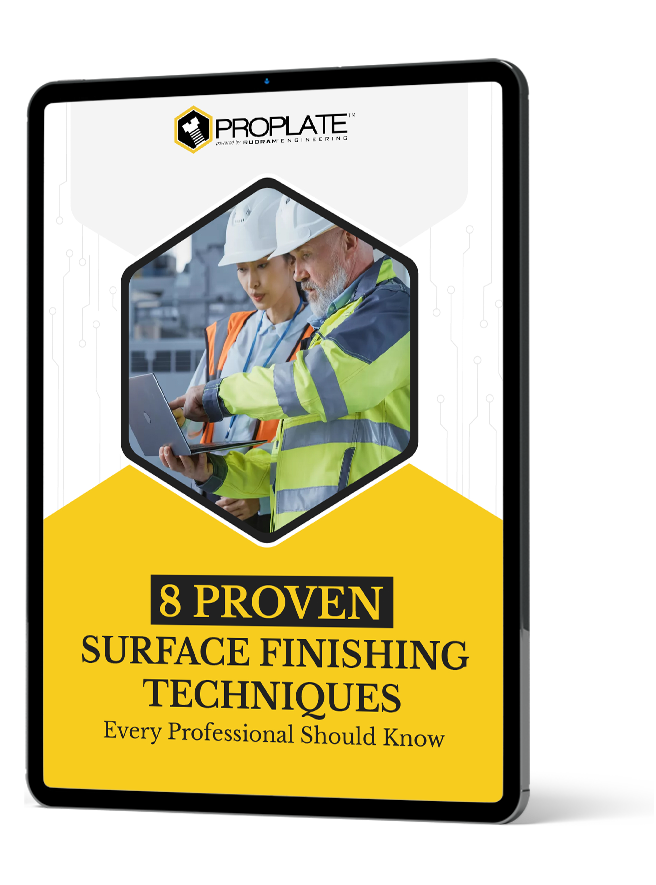Product durability is critical in determining a product’s success or failure in the competitive manufacturing landscape. Metal finishing technology plays a pivotal role in enhancing the durability of metal products, providing them with improved resistance to wear, corrosion, and other environmental factors. This blog post delves into how metal finishing technology increases product longevity and reliability.
What is Metal Finishing Technology?
Metal finishing technology encompasses a variety of processes used to treat the surface of metal products. These processes enhance the metal’s appearance, performance, and durability. Standard metal finishing techniques include electroplating, anodizing, powder coating, and polishing.
Key Metal Finishing Techniques and Their Impact on Durability
1. Electroplating
Electroplating involves depositing a thin layer of metal onto the surface of a product through an electrochemical process. This technique enhances durability by:
2. Anodizing
Anodizing is an electrochemical process that converts the metal surface into a durable, corrosion-resistant oxide layer. This technique is particularly effective for aluminum products. Benefits include:
3. Powder Coating
Powder coating involves applying a dry powder to the metal surface, which is then cured under heat to form a durable, protective layer. This technique offers:
4. Polishing and Buffing
Polishing and buffing are mechanical processes that improve the surface finish of metal products. These techniques enhance durability by:
Benefits of Metal Finishing Technology for Product Durability
Applications of Metal Finishing Technology
1. Automotive Industry
In the automotive industry, metal finishing is crucial for components like wheels, engine parts, and body panels. Enhanced durability ensures these parts can withstand harsh driving conditions and exposure to elements.
2. Aerospace Industry
Aerospace components require high durability and resistance to extreme conditions. Metal finishing processes like anodizing and electroplating protect against corrosion and wear.
3. Electronics Industry
In electronics, metal finishing ensures that components like connectors and circuit boards remain functional over extended periods, even in adverse environmental conditions.
4. Medical Devices
Medical devices demand high levels of durability and biocompatibility. Metal finishing techniques help create surfaces resistant to wear, corrosion, and microbial growth.
About PROPLATE™
PROPLATE™, as your complete surface finishing solution platform, is an engineering marvel crafted to change your operations radically. Altogether, one can admit, due to the numerous features and tools the PROPLATE™ provides its users, that this software is the most efficient and convenient tool to control all stages of surface-making processes. From end-to-end process integration for projects to the easy exchange of information with clients, PROPLATE™ makes businesses capable of fine-tuning their methods to get real-world performance and best-quality outcomes. Whether for a single shop establishment or a huge production company, PROPLATE™ has the features for a successful plate fabrication makeover, ever-improved company services, and a competitive edge in the highly demanding industry of today.
Conclusion
Metal finishing technology is integral to enhancing the durability of metal products across various industries. By improving corrosion resistance, wear and tear resistance, and surface hardness, these technologies ensure that products last longer and perform better. As industries continue to innovate and demand higher quality standards, metal finishing technology will remain a critical component in achieving sustainability and efficiency in manufacturing.
FAQs
What is metal finishing technology?
It involves various processes used to treat the surface of metal products to enhance their appearance, performance, and durability.
How does electroplating improve product durability?
Electroplating adds a thin layer of metal to a product’s surface, enhancing its corrosion resistance, wear resistance, and surface hardness.
What are the benefits of anodizing?
Anodizing improves corrosion resistance, increases surface hardness, and provides aesthetic and functional coatings, especially for aluminum products.
Why is powder coating considered eco-friendly?
Powder coating produces minimal waste and does not release volatile organic compounds (VOCs), making it an environmentally friendly finishing process.
How does metal finishing technology benefit the automotive industry?
Metal finishing enhances the durability of automotive components, ensuring they withstand harsh driving conditions and exposure to environmental elements.
